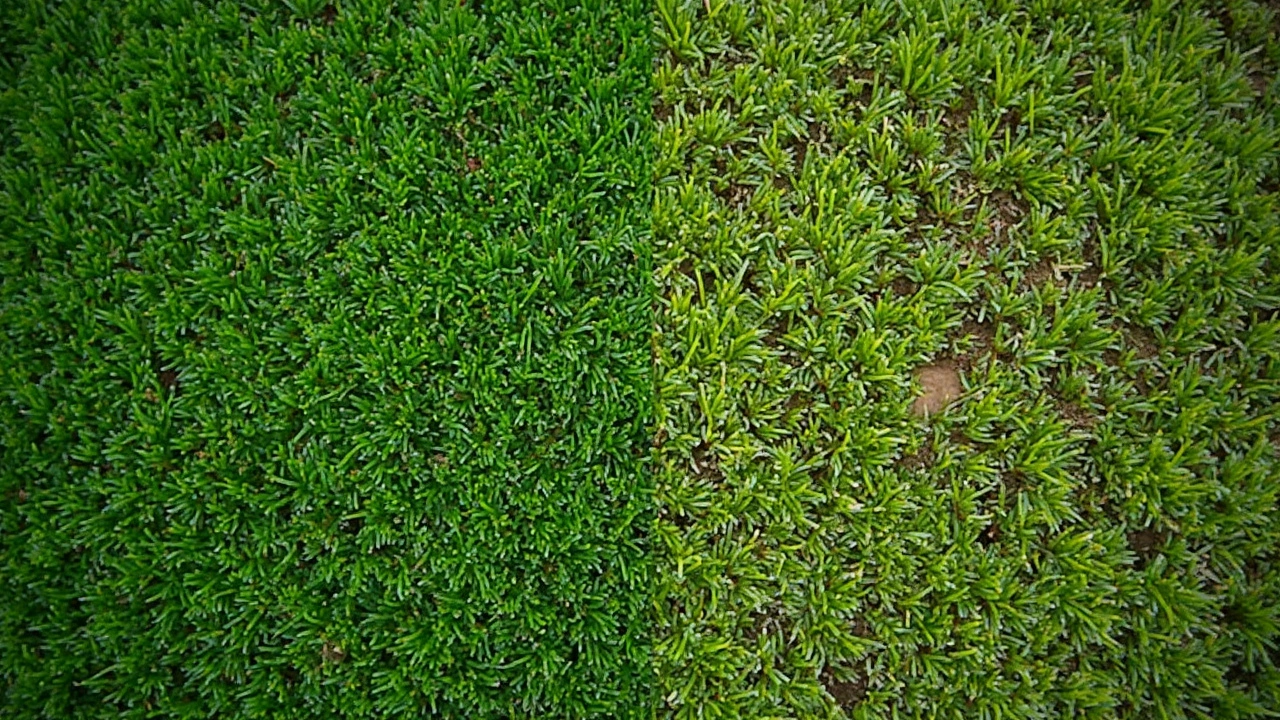Ask anyone who's wrestled with patchy lawns: getting new grass to sprout is all about water. Too little, and the seed dries out before it even pops. Too much, and you end up drowning the seeds or encouraging fungus—nobody wants a swampy mess out back. So, what's the sweet spot?
Newly seeded lawns need steady moisture. The trick? Keep the top inch or so of soil consistently damp, but never soggy. Imagine the soil feels like a wrung-out sponge—not bone dry, not dripping wet. Water lightly and often. In most cases, that means watering once in the morning and possibly a second light watering in the late afternoon, especially if the sun's blazing or there's wind drying things out.
Don't just guess. Press your finger into the soil each day. If it feels dry at your fingertip, it's time to water. These early days are when seeds are most delicate, so don't let them dry out or sit in puddles. Once you see sprouting, start backing off. You'll still want to keep the soil moist, but not soaked—let those baby roots drive deeper in search of water. That’s how you get sturdy, drought-tough grass instead of a lawn that's always begging for a drink.
- Why Watering Grass Seed Matters
- Finding the Perfect Watering Schedule
- Weather Factors That Change Everything
- Common Watering Mistakes (and How to Avoid Them)
- Next-Level Tips for Grass Seed Success
Why Watering Grass Seed Matters
If you skip watering, grass seed just sits there—nothing happens. It won’t magically sprout on its own. That’s because every water grass seed guide will tell you: seeds need moisture to germinate. When you add water, it wakes up the seed, kicks off the growing process, and tells it to start pushing roots down into the dirt. No water, no action.
The first 10–21 days are crucial. In this window, seeds soak up water and begin to split open. The tiny root shoots down, followed by a sprout pushing itself up. If the seed dries out during this stage, it can die off—wasting both money and effort. On top of that, letting the surface dry out and re-wetting it over and over can stall growth, meaning more bare patches and uneven lawns later on.
It’s not just about starting off, either. Consistent, light watering helps seeds anchor roots before hot sun or wind can cook them. Without those steady drinks, your grass seed can get stressed, stunt, or just give up entirely. Dry spells equal failed seeds.
Ever see people re-seed the same bald spots again and again? Nine times out of ten, it’s because they didn’t nail the watering routine. Here’s what happens if things go wrong:
- Too little water: Seeds stay dormant or dry out and die. You get patchy results at best.
- Way too much water: You drown seeds, cause rot, or make way for mold and weeds.
- Up-and-down watering: Roots stay shallow, making your new lawn super weak.
Here’s a handy breakdown of what seeds need in those first weeks:
| Stage | Watering Need |
|---|---|
| Days 1-7 | Keep surface damp, water 1-2 times a day |
| Days 8-21 | Still moist, but let top dry slightly between waterings |
| After sprouting | Gradually cut back, water deeper but less often |
Getting the watering right is what separates lush lawn care wins from wasting weekends on brown patches.
Finding the Perfect Watering Schedule
Dialing in a watering schedule for grass seed is actually pretty straightforward if you stick to some key rules. For the first 2-3 weeks, you need to water often but lightly because the seeds are right at the surface and their roots are short. Most experts suggest watering grass seed two to three times per day, keeping the top half inch of soil consistently moist. If your soil dries out in between, that’s when germination tends to stall out.
Here’s a simple rule of thumb to make it easy:
- First 10-14 days: Water lightly in the morning and again in the late afternoon. If your area is super sunny or windy, you might need a third light sprinkle around midday.
- After grass sprouts: Drop to once per day, but increase the amount so the water soaks deeper—aim for the top one inch of soil.
- After 3-4 weeks: Start watering every other day, always watching how fast your soil dries out.
Never blast the soil with a strong spray. A soft, shower-like setting works best—think of rain, not hail. A watering schedule like this gets the best out of your lawn care routine.
If you’re the stats-loving type, check out the basic recommendations from turf pros:
| Stage | Watering Frequency | Water Amount |
|---|---|---|
| Seed to Sprout | 2-3 times/day | 1/8"–1/4" per session |
| Sprout to 4 weeks | Once/day | 1/4"–1/2" per session |
| 4+ weeks | Every other day | 1/2"–1" per session |
Pay attention to rain. If you get a decent shower, skip the next watering. But if it’s just a sprinkle, pretend like it never happened and stick to your schedule. Wetter is not better, but you can’t let the seeds dry out either. That’s the balancing act. Remember: consistency is everything here.

Weather Factors That Change Everything
No matter how perfect your water grass seed routine is, the weather can flip the script overnight. Super hot days, surprise rain, cool breezes—each asks you to tweak your watering plan.
On hot, sunny days above 80°F (27°C), evaporation is working overtime. You might need to water your grass seed three times a day, real light and quick, just to stop the soil from crusting over. Windy spells do the same thing—they pull moisture out of your dirt in a hurry, leaving your seeds dry and struggling. Shade slows this down, so if you’re seeding under a tree, you may not need to water as often.
Rain changes everything too. If you get a steady rain, skip a watering—or two! But heavy downpours can wash seed away, or pack it down. It’s smart to peek outside after a storm to see what got washed out of place or needs a little touch up. If your soil puddles or stays soggy for hours, ease up on watering until things dry out.
Chilly weather, like daytime temps under 60°F (15°C), slows down germination. Seeds take longer to sprout and need less water. In these cases, keep the soil barely moist instead of soaking it like you would in mid-July. No need to drown the seed if growth is slow.
| Weather Condition | Watering Frequency | Pro Tip |
|---|---|---|
| Hot & Sunny | 2-3 times/day | Short, frequent waterings prevent dry-out. |
| Windy | 2-3 times/day | Check often—wind pulls moisture fast. |
| Rainy | Skip as needed | Wait until surface dries before next watering. |
| Cool & Cloudy | Once/day or every other day | Seeds won’t dry out as fast. |
No two lawns or weeks are exactly the same. Adjust your watering schedule based on today’s conditions, not last week’s. The soil should always tell you the real story—so poke it with a finger often and keep your seed happy no matter what’s happening in the sky.
Common Watering Mistakes (and How to Avoid Them)
This is where most folks slip up. You’ve got your water grass seed technique down, then one bad habit throws everything off. Here’s what actually trips up new grass, and what you can do differently.
- Overwatering: If you flood your grass seed, the result isn’t a greener yard—it’s washed-out seed, shallow roots, and a breeding ground for mold and fungus. Grass seed just needs steady, gentle moisture. Pouring on the water might feel helpful, but it suffocates new roots and can rot the seed itself.
- Underwatering: On the flip side, lots of folks skimp after the initial soak. If the soil’s dry to the touch, even for a few hours on a hot or windy day, seeds can die off before they sprout. Especially in the first two weeks, don’t let the surface dry out.
- Wrong timing: Watering in the heat of the day? Most of it just evaporates and you waste water. Early morning is best. If you water at night, it stays damp too long and creates the perfect spot for fungus to grow.
- Heavy spraying: If you crank up the hose or use a strong spray setting, you’ll move seeds around or bury them too deep. Use a gentle shower head or even a light sprinkle setup to avoid blasting the seeds out of place.
Let’s put things in perspective:
| Mistake | What Happens | Fix |
|---|---|---|
| Overwatering | Seed rot, fungus, poor roots | Lighter, more frequent watering |
| Underwatering | Seeds dry out and die | Water often enough to keep surface damp |
| Bad timing | Evaporation, higher disease risk | Water early morning |
| Strong spray | Seeds shift or get buried | Gentle nozzle/setting |
If you’re using sprinklers, check the pattern and coverage to make sure you’re not missing the edges or overdoing the middle. Some homeowners are shocked when they see patchy growth and realize the corners never got watered. Also, always check local watering rules—overwatering isn’t just bad for your lawn, it could get you a ticket during water restrictions.
The trick to perfect lawn care? Think “light and steady” instead of “soak and go.” Check soil with your finger, keep the top inch evenly moist, and resist the urge to drown the seeds. Your future self—plus your wallet—will thank you.

Next-Level Tips for Grass Seed Success
If you want that golf-course look, it’s all about dialing in the details after you nail the basics of water grass seed timing. Let’s get into some real game-changers.
1. Mix Up Your Watering Over Time
Once your grass seed starts sprouting, don’t just stick with the same routine. Start stretching out the intervals between watering and increase the amount a bit each time. This encourages roots to grow deeper, which means a tougher, greener lawn down the road.
2. Pick the Right Time of Day
Always aim to water early in the morning, before 9 a.m. This avoids scorching heat and gives the grass blades time to dry out. Night watering? Not so great. It can lead to fungus. The best lawns are finished getting their drink before breakfast.
3. Don’t Forget Your Mower
When your new grass looks shaggy (usually about 3 inches tall), it’s time for the first mow. Make sure the blades are razor-sharp. Dull blades rip tender shoots right out of the ground. No pressure, but this first cut can set the tone for the whole season.
4. Feed, Don’t Overfeed
Seed starter fertilizers give a real boost—but too much can burn baby grass. Look for starter blends low in nitrogen and high in phosphorus. Here’s a quick cheat sheet:
| Type | Nitrogen (N) | Phosphorus (P) | Potassium (K) |
|---|---|---|---|
| Starter Fertilizer | Low | High | Moderate |
| Regular Lawn Fertilizer | High | Low | Moderate |
5. Cover Bare Spots Smart
Straw is classic, but make sure it’s weed-free. Lightweight covers like erosion mats or seed blankets help keep things moist and hold everything in place, even if there’s a windstorm.
6. Keep Off the Grass—Literally
This part is tough, especially with kids or dogs. But too much foot traffic can crush young shoots or push seed deeper than it needs to go. Try marking off just seeded areas for a few weeks until things look thick and healthy.
"Establishing a lawn from seed takes careful watering and patience—but it’s the small details, like mowing timing and protection, that separate average lawns from the truly exceptional," says the University of Maryland’s Home and Garden Information Center.
If your lawn’s patchy or slow to sprout, don’t panic. Sometimes the best move is to reseed a thin area and stick with your watering schedule. In most cases, following these tips makes the difference between struggling grass and a lush, brag-worthy yard.
